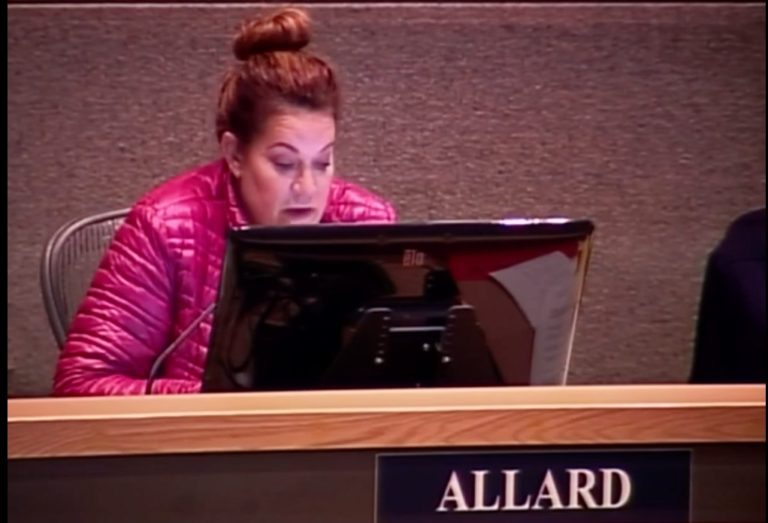WINTER IS COMING, WILL LAWSUIT BE FAR BEHIND?
Behind the scenes in Alaska’s legislative leadership, leftist sparring with the governor and incoming Republican leadership is playing out, as progressives in charge of the House and Senate try to game Gov. Mike Dunleavy and his emergency orders.
The gamesmanship is centered on the governor’s recent emergency declaration. Leftists, who will lose control of the Legislature in January, want to push for a special session that would allow them to do veto overrides or even move CARES Act money around to their priorities.
Senate President Cathy Giessel and House Speaker Bryce Edgmon on Friday issued a statement warning that without legislative approval, Dunleavy’s new emergency declaration is on shaky legal footing.
While it’s not likely the two could sue over the declaration (that would require action from Legislative Council), they might be setting up a scenario for surrogates to do so, such as liberal lawyer Scott Kendall, who heads up the Recall Dunleavy Committee, or the litigious ACLU. Even Juneau lawyer Joe Geldhof, who sues over such constitutional matters, might be persuaded to take up the cause.
Giessel and Edgmon want the governor to call the Legislature into special session, since they say they do not have the votes to call for a special session themselves. It takes 40 votes.
Giessel and Edgmon promised in a note to the governor that if he calls a special session, they will try to not expand the agenda beyond the actual emergency order, but there’s little doubt a game is afoot, with veto overrides being among the most likely goal.
This is lame-duck leadership that looks to put sideboards on the next legislative organization, and time is running out on their shift at the helm.
On Friday, Dunleavy announced the new 30-day Declaration of Public Health Disaster Emergency in response to the COVID-19 outbreak. The declaration goes into effect on 12:01 a.m. on Nov. 16, and expires on 11:59 p.m. on Dec. 15. He would need legislative approval to extend it, or he could make another declaration, with different rationale — but at the peril of inviting a lawsuit.
Without an emergency declaration, the State can no longer run a unified command operation, hospitals cannot have flexibility to designate certain wings or even a hotel as an isolation unit, if needed, and telemedicine flexibility would end.
The COVID testing at the airports for incoming travelers would disappear, and the reserve hospital set up at the Alaska Airlines Center on the UAA campus would be dismantled. Federal receipt authority is also at stake. People would not be able to get their business done online with the state government, such as renewing their drivers licenses, as hundreds of now-suspended regulations would return to normal status.
Even the regulation limiting the amount of time children can be on computers at schools would return to normal, making distance education impossible.
Dunleavy’s initial March 11 disaster declaration was to address a pending outbreak of COVID-19. At that point, only a couple of cases of the virus had been detected in the state.
The upcoming declaration refers to an outbreak that is now underway. The number of cases diagnosed in Alaska is nearly 18,000 and the daily infection count rose to 600 on Friday, nearly double what it was a week earlier.
“Recent conversations with legislators, health professionals, and business leaders confirm a broad consensus that it is in the state’s best interest to ensure we have an emergency declaration in place beyond November 15,” Dunleavy said.
“This new disaster declaration is based upon the determination of moving from the threat of a pandemic to an actual pandemic. Given the tools the declaration will provide to the state, boroughs, and municipalities, as well as our health professionals and medical facilities, this declaration will continue to provide certainty to Alaskans during this pandemic. The Legislature has indicated they do not currently have the support of their members to call themselves into a special session. If the Legislature chooses to convene to address this new order, my administration is ready to assist in developing long-term solutions to manage this emergency and protect the public safety and health of Alaskans.”
In October, Giessel stated to public broadcasting that she was unconcerned about the emergency declaration expiring, saying community public health efforts are more important.
“We have some good, functional logistics in place now in the state,” Giessel said on Oct. 2. “Communities are very nimble in recognizing when they need to shut down.” It was her opinion then that a statewide emergency declaration was no longer needed.
Now, left-leaning legislators, who understand that they will lose power on Jan. 18 when the new Legislature convenes, would like to convene in some way.
Discussions have been underway among those such as hardcore Democrats Rep. Zack Fields and Tiffany Zulkosky, who have been pushing the statewide mask mandate, about how the Legislature might convene via teleconference, using the Zoom program. But how that would circumvent public participation and process is another legal concern for Alaskans.
It was just 18 months ago that leftist legislators refused to convene in a special session that the governor had called in Wasilla, saying it was illegal to convene anywhere but Juneau.
Meanwhile, there are no protocols in place in the Alaska State Capitol to prevent an outbreak if lawmakers suddenly arrive next week to try to hash out the various wants and needs that would arise once they convene.
The public health director in Juneau told legislators it was nearly a guarantee that there would be an outbreak in the Capitol.
Whatever happens next with the governor’s emergency orders, he can only declare an emergency for 30 days at a time without legislative authority, and he cannot extend it after Dec. 15 without some legally sound reason. This means the inevitable end of the flexibility that has allowed the state to function with its hundreds of loosened regulations since last March 11.








